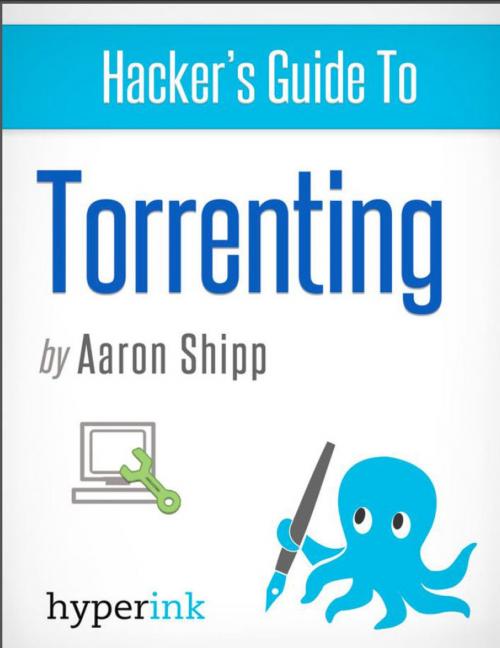| Author: | Aaron Shipp | ISBN: | 9781614640318 |
| Publisher: | Hyperink | Publication: | February 24, 2012 |
| Imprint: | Hyperink | Language: | English |
| Author: | Aaron Shipp |
| ISBN: | 9781614640318 |
| Publisher: | Hyperink |
| Publication: | February 24, 2012 |
| Imprint: | Hyperink |
| Language: | English |
ABOUT THE BOOK
So ye wish to sail the digital seas, plundering her infinite horizon for a booty of shared knowledge and entertainment. Well my aspiring pirate, like all quests for fortune, you’ll need the right tools and a proper treasure map. The proceeding is that proper map, both to the treasure and tools with which to excavate it.
“Torrenting” is the practice of using torrents to compile bits of information from peers who share pieces of one or more files. It is a general term given to the second generation of Peer-to-Peer sharing technology, a progression from earlier applications such as Limewire and Morpheus. Broken down, the transaction process is comprised of “swarming” and “tracking”.
The bits of available data, together, form a sort of “swarm” which is drawn upon to download files. Facilitating that swarming process, are web sites with specific servers that help swarm users locate one another. These webservers are typically referred to as “trackers”. This complex system of peer-to-peer transacting is commonly utilized for downloading movies, music, and software.
MEET THE AUTHOR
Aaron sports not only a high school diploma, but 10+ years of hands-on experience in music journalism. His interests include music, sports, fiction, and current events.
EXCERPT FROM THE BOOK
1. Torrent Clients
In order to start downloading data via torrents, you first need a torrent client. Many torrent clients are available (for free) and can be found with a simple search. Some of the more popular clients include uTorrent, BitTorrent, and even Kazaa (which began as a more straight-up torrent client but now offers a more commercialized interface).
Torrent clients all serve one major purpose and that is the gathering of swarm data via the downloaded text (torrent) file. How you choose your preferred client depends entirely on your experience level and the interface each provides. While sufficient steps to ensure safe sailing will be required (we’ll touch on those later), no torrent client can effectively hide your torrent traffic from your ISP. This is important to keep in mind when comparing clients as well as going forward in this learning process.
Buy a copy to keep reading!
ABOUT THE BOOK
So ye wish to sail the digital seas, plundering her infinite horizon for a booty of shared knowledge and entertainment. Well my aspiring pirate, like all quests for fortune, you’ll need the right tools and a proper treasure map. The proceeding is that proper map, both to the treasure and tools with which to excavate it.
“Torrenting” is the practice of using torrents to compile bits of information from peers who share pieces of one or more files. It is a general term given to the second generation of Peer-to-Peer sharing technology, a progression from earlier applications such as Limewire and Morpheus. Broken down, the transaction process is comprised of “swarming” and “tracking”.
The bits of available data, together, form a sort of “swarm” which is drawn upon to download files. Facilitating that swarming process, are web sites with specific servers that help swarm users locate one another. These webservers are typically referred to as “trackers”. This complex system of peer-to-peer transacting is commonly utilized for downloading movies, music, and software.
MEET THE AUTHOR
Aaron sports not only a high school diploma, but 10+ years of hands-on experience in music journalism. His interests include music, sports, fiction, and current events.
EXCERPT FROM THE BOOK
1. Torrent Clients
In order to start downloading data via torrents, you first need a torrent client. Many torrent clients are available (for free) and can be found with a simple search. Some of the more popular clients include uTorrent, BitTorrent, and even Kazaa (which began as a more straight-up torrent client but now offers a more commercialized interface).
Torrent clients all serve one major purpose and that is the gathering of swarm data via the downloaded text (torrent) file. How you choose your preferred client depends entirely on your experience level and the interface each provides. While sufficient steps to ensure safe sailing will be required (we’ll touch on those later), no torrent client can effectively hide your torrent traffic from your ISP. This is important to keep in mind when comparing clients as well as going forward in this learning process.
Buy a copy to keep reading!















